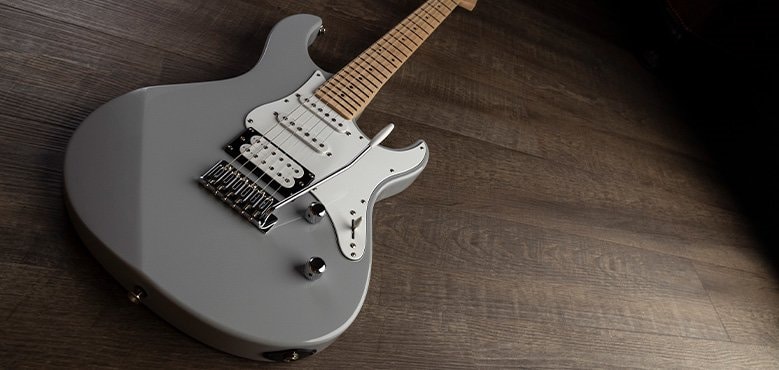How to Tune a Guitar
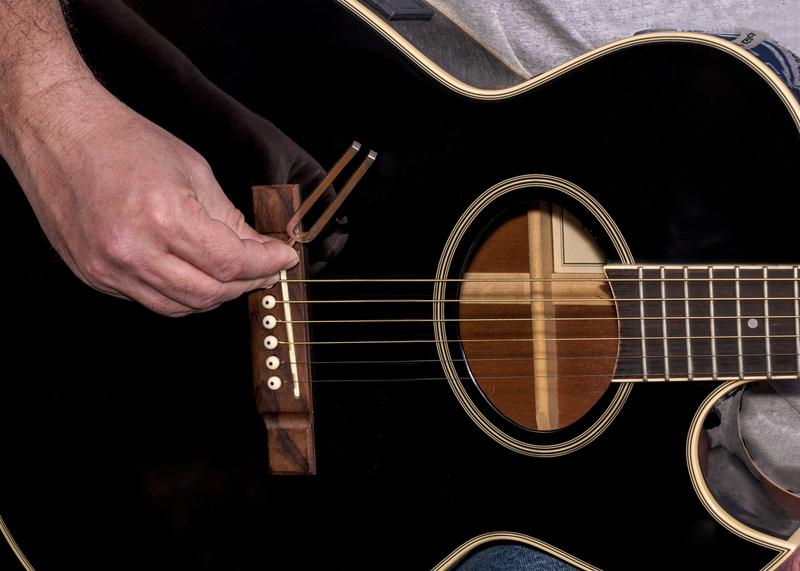
Learning to how to tune a guitar properly is an essential step for any musician.
Whether you’re a beginner just starting out or an advanced player looking to perfect your sound, a well-tuned guitar not only sounds better, but it also makes playing easier and more enjoyable.
In this comprehensive guide, we’ll explore the different types of tuning methods, provide step-by-step instructions for tuning by ear and using electronic tuners, and share some tips for keeping your guitar in tune. Let’s get right into it.
Understanding the Basics of Guitar Tuning
In order to tune a guitar properly, it’s important to understand the basic parts of the instrument and how they relate to tuning.
The tuning pegs, located on the guitar’s headstock, are used to adjust the tension of each string and raise or lower its pitch. The bridge, located on the body of the guitar, anchors the strings in place. And the nut, located at the top of the fingerboard, holds the strings in place at the head of the guitar.
This may sound like a lot, but it’s actually pretty easy once you get the hang of it. Plus, when you learn to tune your guitar, you’ll be able to tune any guitar, whether it’s an acoustic, a classical, or an electric guitar. So, let’s get started with the most popular guitar tuning for beginners: Standard Tuning.
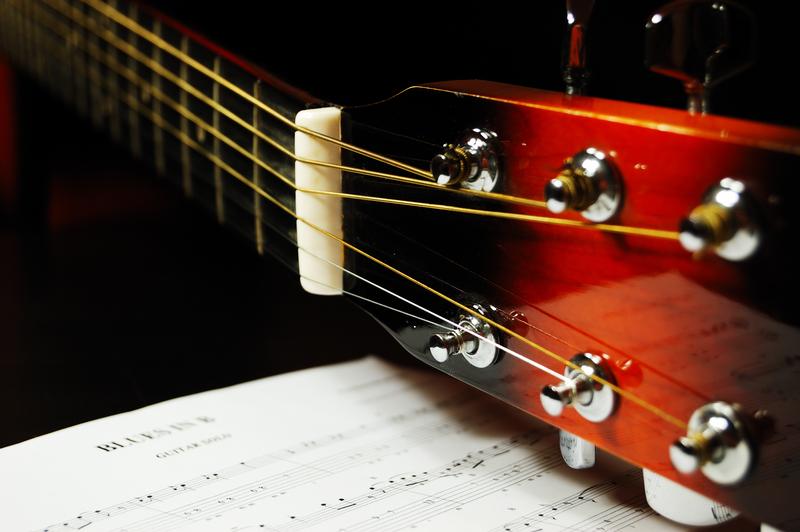
Standard Guitar Tuning
Standard tuning is the most commonly used tuning and is the starting point for most guitarists. The standard guitar tuning for a six-string guitar is E-A-D-G-B-E, with the thicker strings (E and A) having a lower pitch and the thinner strings (D, G, B, E) having a higher pitch. For a beginner, tuning a guitar to standard tuning is relatively easy.
Here’s a Standard Tuning pattern:
- Locate the tuning pegs on the headstock of your guitar. These are the small knobs that you will use to adjust the pitch of each string.
- Begin with the lowest pitched string, the low E string. This is the thickest string and is located closest to the floor when you’re sitting down with the guitar in your lap.
- Play the low E string and compare the pitch to a reference pitch, for example a piano, or an electronic tuner, or pitch pipe.
- Use the tuning peg on the headstock to adjust the pitch of the guitar string until it matches the reference pitch.
- Move on to the A string, which is located next to the low E string. Repeat the process by comparing the pitch of the A string to the reference note and adjusting the tuning peg as necessary.
- Continue with the D string, G string, B string, and the highest pitched string, the high E string, repeating the process for each one.
As you become more familiar with the process and develop your ear for pitch, you’ll be able to tune your guitar more quickly and accurately. Remember that guitar tuning is not a one-time task, it’s something that should be regularly checked and adjusted as needed to ensure your guitar always sound its best.
Types of Tuning Methods
One of the most popular ways to tune a guitar is by using an electronic tuner. These devices use a microphone input to pick up the sound of the guitar and display the pitch of each string on a screen. They are very accurate and easy to use, making them a great choice for guitarists of all skill levels.
One of our favourite apps is Guitar Tuna. This is a really accurate tuner, aimed at guitarists, with loads of helpful features on board to help beginners learn a whole bunch of songs. The tuner part of the app is slightly different to most others but works really well.
Download for iOS
Download for Android

Another method for tuning a guitar is using pitch pipes. These are small, handheld devices that produce a single pitch for each of the guitar strings. Pitch pipes are a cost-effective solution and do not require batteries. However, they can be less accurate than electronic tuners.
Tuning by ear is another technique that involves listening to the sound of each string and adjusting the tuning pegs until it matches the desired pitch. This method requires a good ear for pitch and can take longer than using an electronic tuner. But it can help improve your overall musicianship and makes you more self-reliant.
How to Use an Electronic Guitar Tuner
An electronic tuner is a device that uses a microphone or a direct input to pick up the sound of the guitar and display the pitch of each string on a screen. These devices can be a great tool for both beginners and experienced guitarists, as they are highly accurate and easy to use.
Here are the steps on how to tune a guitar using an electronic tuner:
- Clip the electronic tuner onto the headstock of your guitar or connect it to the instrument through a direct input.
- Strum or pluck the guitar string you want to tune, and the electronic tuner will display the pitch of the string.
- Compare the pitch displayed on the tuner to the desired pitch for that string.
- Use the tuning pegs on the headstock to adjust the pitch of the string until it matches the desired pitch displayed on the tuner.
- Repeat the process for each string, moving from low E to high E.
Some electronic tuners will have visual representation of a needle or LED lights, indicating whether the pitch is flat, sharp or in-tune. Other tuners use color codes or have arrows indicating if you need to tune up or down. These days, you can even download a guitar tuner app. Either way, it’s important to read the instructions of your specific tuner to understand the indications it gives.
Using an electronic tuner makes the tuning process quick and accurate, but it’s important to understand that it’s not a replacement for developing your ear and the ability to tune by ear. With practice and by regularly tuning your guitar, you will get better at understanding the sound of the instrument and can use an electronic tuner as a tool to quickly check and adjust your tuning.
How to Use a Pitch Pipe
A pitch pipe is a small, handheld device that produces a single pitch for each string on a guitar. Pitch pipes are a simple and inexpensive way to tune a guitar, making them a great tool for beginners.
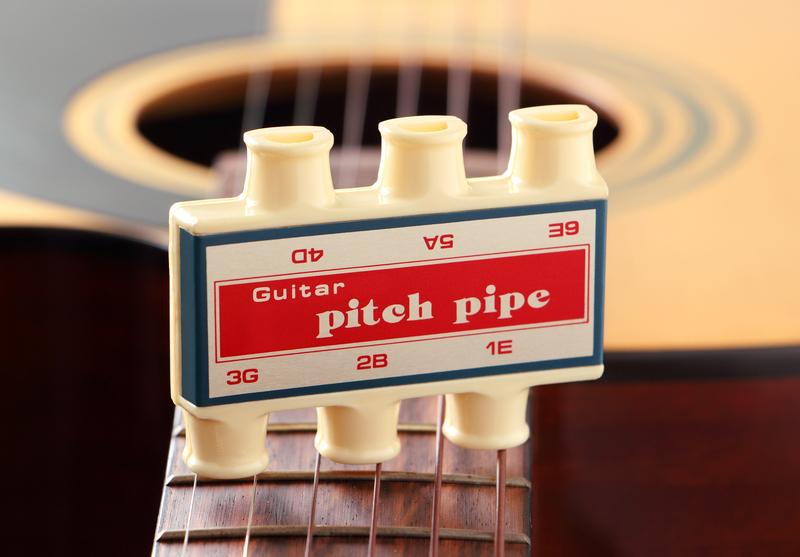
Here are the steps on how to tune a guitar using a pitch pipe:
- Identify the note you want to tune for each string, for example, for the low E string, the note is E.
- Blow into the corresponding pipe on the pitch pipe for the same note.
- Strum or pluck the string you want to tune and compare the pitch of the string to the correct pitch produced by the pitch pipe.
- Use the tuning pegs on the headstock to adjust the pitch of the string until it matches the same pitch produced by the pipe.
- Repeat the process moving from the first to the sixth string.
It’s also important to keep in mind that pitch pipes may not be as accurate as electronic tuners. So, if you’re having trouble getting your guitar in tune using a pitch pipe, then consider trying a different tuning method.
How to Tune a Guitar by Ear
Tuning a guitar by ear is a skill that takes practice to master, but it can be a valuable tool for any musician. One of the most effective ways to tune a guitar by ear is called the “harmonic method.”
This involves fretting a string at the 12th fret (the part of the guitar where the neck meets the body) and comparing the harmonic that is produced by lightly touching the string at the 12th fret while plucking it, to the sound of the open string.

Here are the steps to tune a guitar by ear using the harmonic method:
- Start with the low E string. Play the open string and the harmonic at the 12th fret.
- Adjust the tuning peg until the two sounds match.
- Move on to the A string, repeat the process by fretting the string at the fifth fret, compare the sound of the harmonic and the open string, and adjust the tuning peg as necessary.
- Repeat this process for the D, G, B and high E strings.
Practice is key to developing your ear when tuning by ear. As you get more comfortable with the process, you’ll be able to tune your guitar more quickly and accurately. It’s also important to be in a quiet environment to be able to focus on the sound of the guitar.
Advanced Tuning Techniques
Once you’ve mastered the basic techniques for tuning a guitar, you may want to explore some other tunings such as an open tuning or an alternate tuning.
Open tunings involve tuning the guitar to an open chord, instead of the standard tuning, to produce a different sound. These tunings can be used to play certain styles of music or create interesting arrangements. Examples of open tunings include Open G, Open D and Open E.
Alternate tunings involve changing the tuning of one or more strings from the standard tuning. This can open up new possibilities for chord shapes and voicings and can be used to create unique sounds and textures. Examples of alternate tunings include DADGAD and Double Drop D.
Using open or alternate tuning requires a good understanding of the guitar and can require some adjustment to your playing and chord shapes. It’s important to be familiar with each tuning and practice with it. Eventually you may find a tuning that you love more than standard, but when you’re first learning it’s best to stick to standard tuning.
How to Maintain Proper Tuning
Proper tuning is essential for a guitar to sound its best and for making playing as comfortable as possible. However, maintaining proper tuning is not just a one-time task, it’s a continuous effort. Factors such as temperature, humidity, and string wear can affect the tuning of a guitar.
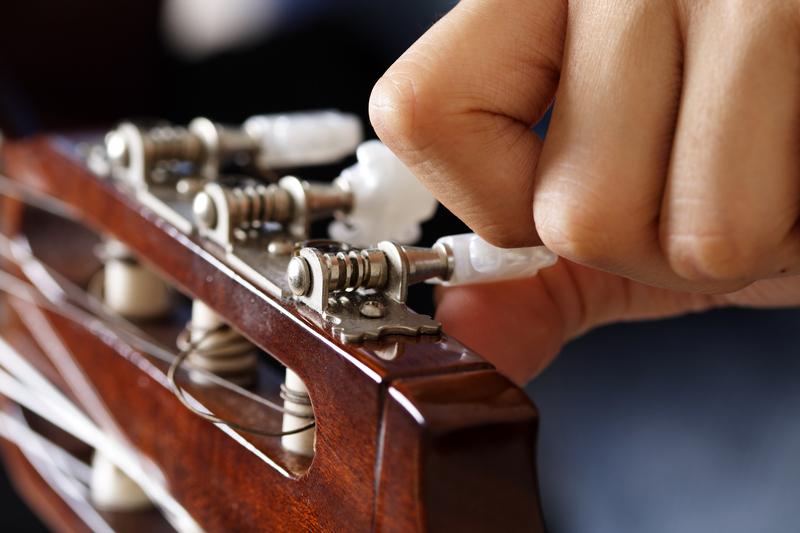
Here are some tips for maintaining proper tuning on your guitar:
- Regularly check the tuning of your guitar, even if you haven’t played it in a while.
- Keep your guitar in a stable environment. Avoid leaving it in extreme temperatures or humidity, as this can cause the wood to expand or contract, affecting the tension of the strings.
- Use the right type of guitar strings for your guitar and your playing style. Fresh strings will almost always stay in tune better than old, worn-out strings.
- Learn how to adjust the truss rod. The truss rod is a metal rod inside the neck of the guitar that adjusts the amount of relief (bow) in the neck. An incorrectly adjusted truss rod can cause tuning problems.
- Be mindful of the tension on the neck when using a capo.
Remember, tuning and adjusting your guitar is an important part of guitar maintenance. Tuning your strings regularly will help to keep your guitar in good condition. As you get more comfortable with the process, you will be able to detect when something is not right and fix your tuning accordingly.
Frequently Asked Questions (FAQs)
What are the names of the guitar strings?
The names of the six strings on a guitar, from low to high, are E, A, D, G, B, and E. The low E string is the thickest string, and the high E string is the thinnest. These names correspond to the notes that are produced when the strings are played open or unfretted. For example, when the G string is played open it will produce a G note if the guitar is in standard tuning.
How do you tune a guitar properly?
There are several methods to tune a guitar, but the most accurate and reliable ways are using an electronic tuner or tuning by ear. The harmonic method is a great way to tune by ear. First, fret the string at the 12th fret and compare the harmonic to the sound of the open string, then adjust the tuning peg accordingly. Repeat this process for each string, moving from low E to high E.
How to tune a guitar for beginners?
For beginners, the easiest way to tune a guitar is by using an electronic tuner. These devices are highly accurate and easy to use. Simply clip the electronic tuner onto the headstock of your guitar, strum or pluck the string you want to tune, and adjust the tuning peg until it matches the pitch displayed on the tuner. Repeat this process for every string.
What are the 3 ways to tune guitar?
The three most common ways to tune a guitar are using an electronic tuner, tuning by ear, and using a pitch pipe. Each method has its own advantages and disadvantages, but all three can be used to achieve accurate tuning.
What is the best guitar tuning?
The best guitar tuning is subjective and depends on the style of music and personal preferences of the musician. Standard tuning is the most commonly used tuning and is a great starting point for most guitar players.
Can I tune my own guitar?
Yes, you can tune your own guitar. With practice and patience, anyone can learn to tune a guitar by ear or using an electronic tuner. Additionally, regular tuning and maintaining your guitar will help to keep it in good condition and make it easier to tune.
Can you break a guitar string when tuning?
Yes, it is possible to break a guitar string when tuning, especially if the string is old or worn, or if the tuning is done too quickly or with too much force. It’s important to be gentle when tuning your guitar and to be aware of the condition of your strings.
Conclusion
In this guide, we have explored the importance of proper guitar tuning, the different types of tuning methods, and how to use them effectively. We have also covered advanced techniques such as open tunings and alternate tunings, as well as tips for keeping your guitar in tune. By mastering these techniques, you’ll be able to tune your guitar with confidence and skill and get more enjoyment from the instrument.
Want to Learn How to Play Guitar?
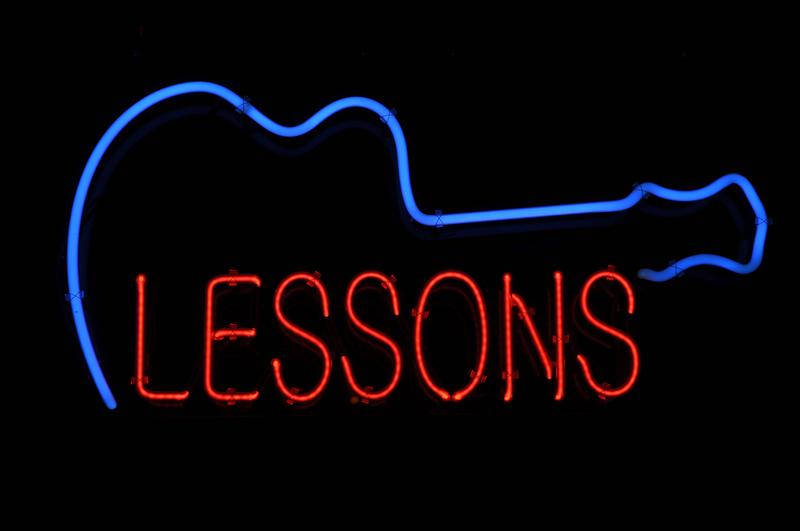
Now you’ve learnt how to tune a guitar, If you want to master the guitar, then you’ll first need to learn the basics. But even if you’re already at an advanced level, there is always more to learn. That’s where Elevate by ICMP comes in. Elevate is a platform dedicated to helping people learn the art of making music. From blues guitar to rhythm guitar and much more, elevate has the perfect online course for you. So, be sure to check out Elevate by ICMP today.
From the blog

Rockstars in Training: The Best Kids’ Electric Guitars for 2024

Redefining Your Riffs: How Electric Guitar Strings Shape Your Sound
